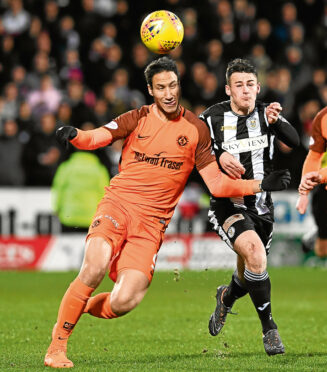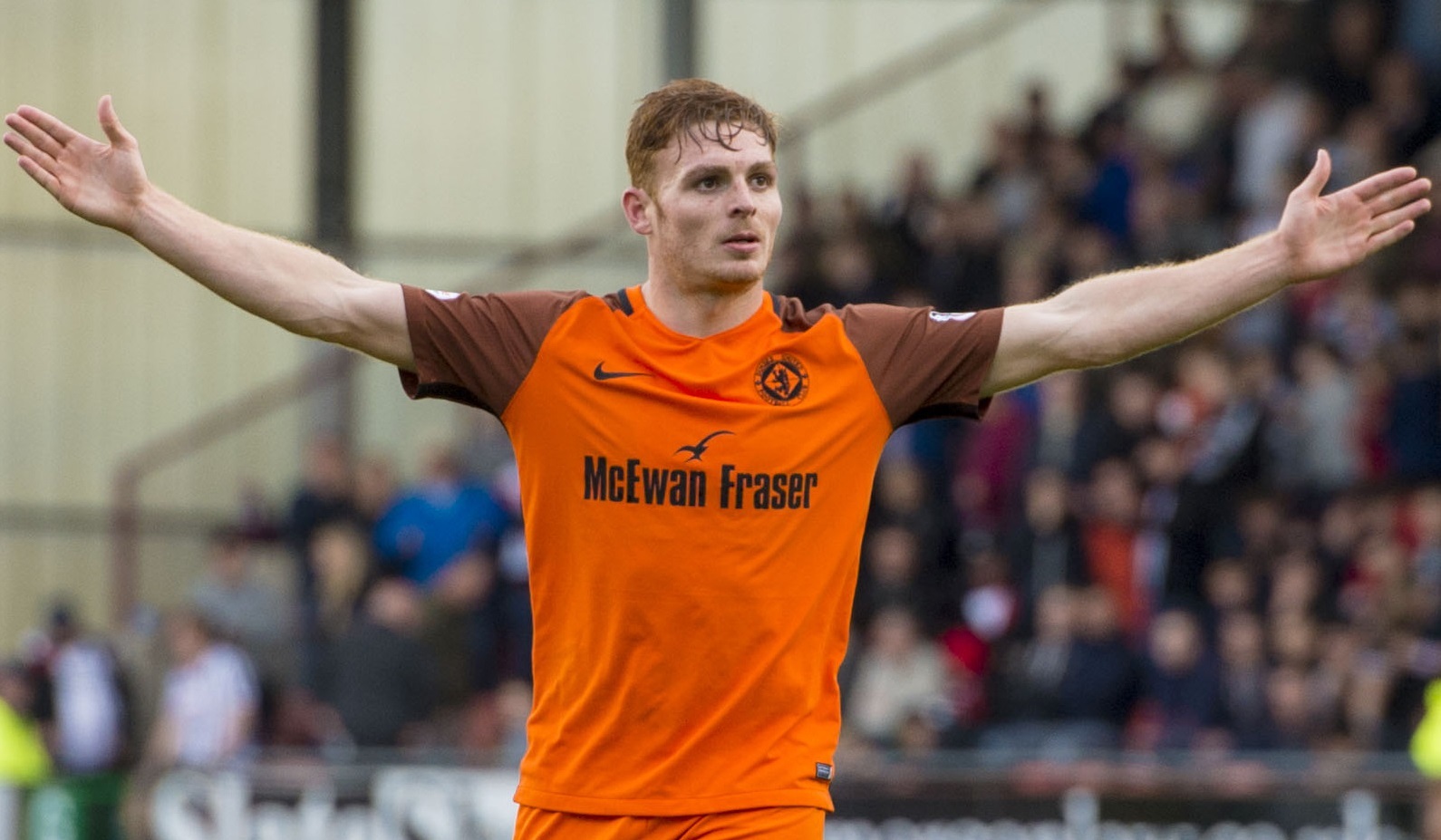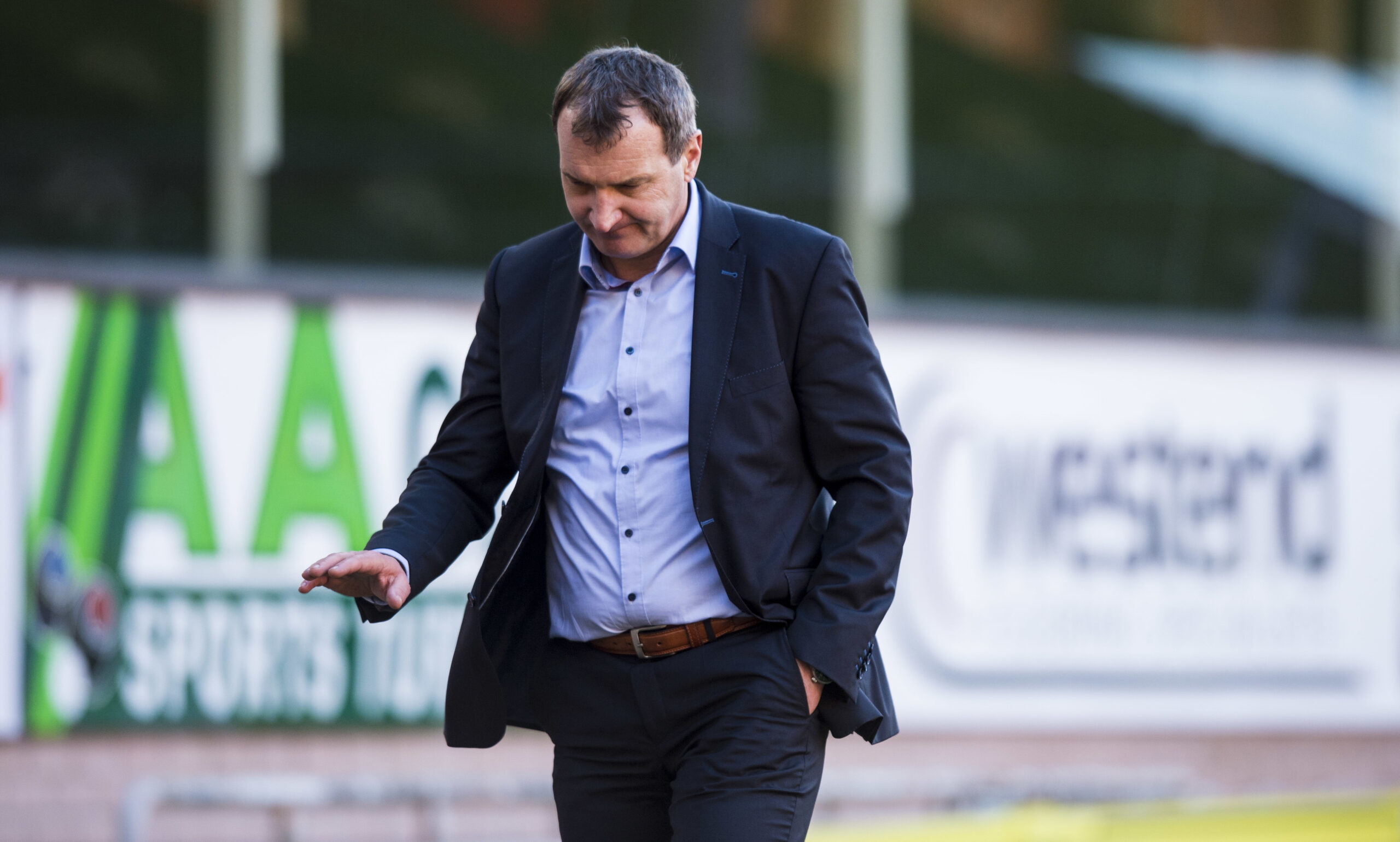Dundee United’s second season in the Championship ended in another disappointment and failure to get back to the Premiership.
A post-Christmas slump cost them any chance of automatic promotion meaning, once again, the play-offs were their only route back to the top flight.
And yet again that proved beyond them, with last week’s semi-final tie against Livingston ending in defeat over two legs and leaving plenty for boss Csaba Laszlo to consider.
We take a look at the reasons for their failure by breaking down the team and compiling an end-of-year report card for the Tangerines.
It doesn’t make for good reading…
Defence
United’s defensive record is summed up in one short phrase – you should’ve done better.
At a huge 42 goals conceded, the Terrors’ rearguard was only the sixth most secure in the Championship and that goes a long way to explaining exactly why automatic promotion was beyond them so early in the campaign.
To be fair, things improved this year with the arrival of Anthony Ralston and Bilel Mohsni, but by then it was too little too late.
Ralston is now back at parent club Celtic and unlikely to return next season while Mohsni has chosen to leave the club – despite being offered a new deal.
Grade: D
Midfield
When skipper Willo Flood and Fraser Fyvie were together as anchors in the middle of the park, this was, without question, the best midfield in the division.
A horror knee injury suffered at Christmas meant Fyvie was ruled out for the rest of the campaign and it was a problem from which United never fully recovered.
Likewise, Scott Fraser’s broken foot that ruled him out for three months from
the end of December, meant the potency going forward was reduced considerably.
He looks set to move on under freedom of contract over the summer, so adequately replacing him is again going to be an issue for Csaba.
Grade: C
Attack
With 16 goals in league and play-off games, veteran Scott McDonald was the top marksman at Tannadice this season.
That’s not a bad haul at all but overall United were, again, only sixth best and their 52 goals made them the lowest scorers of the full-time teams in the second tier.
And throughout the campaign they never really had a settled look up front.
Additionally, for a team that dominated possession, in too many games during their post-Christmas slump, nothing like enough chances were created for the front men.
Things did improve over the final month or so, but then the issue was not enough opportunities were being converted up top.
Grade: D
Tactics
Both Ray McKinnon, who started the season in charge, and the man who’s now in the hot seat, Csaba, usually deployed a 4-2-3-1 formation.
That’s a set-up that certainly allowed United to have the lion’s share of possession in most of their games.
What it never quite seemed to do was lead to enough chances in the opposition box.
There has long been an opinion about this league that using a direction approach, with two men right up top, is the best way to go.
United’s failure to get up added weight to that argument. Certainly, few will complain if two front men are used next time out.
Grade: D
Signings
When Ray McKinnon was putting together his squad for 2018/19, the signings he made looked spot on.
The arrival of the likes of Paul McMullan, Billy King, Tam Scobbie and James Keatings had a lot to do with them being favourites to go up.
They looked the kind of acquisitions that would make United hard to break down at one end of the park and hard to resist at the other.
Truth is, though, none of them have quite lived up to expectations.
In the end, the best additions of the season were arguably Mohsni and Ralston, although one of the early signings, Sam Stanton, did have a very consistent season and in a number of different positions.
Grade: C+
Summary
The long and short of it is that if Dundee United are out of the top tier of Scottish football and do not win promotion, their season has to go down as being a failure.
That’s the brutal truth about a club of this size, stature and reputation.
So for the second campaign running United have not hit a mark that could be reasonably considered as acceptable.
And, however tight the budget gets as the cost of being out of the Premiership continues to bite, the expectation of pundits and fans will not change.
That means United have to do better than this season or they will once again be labelled with that word – failures.
Grade: D





